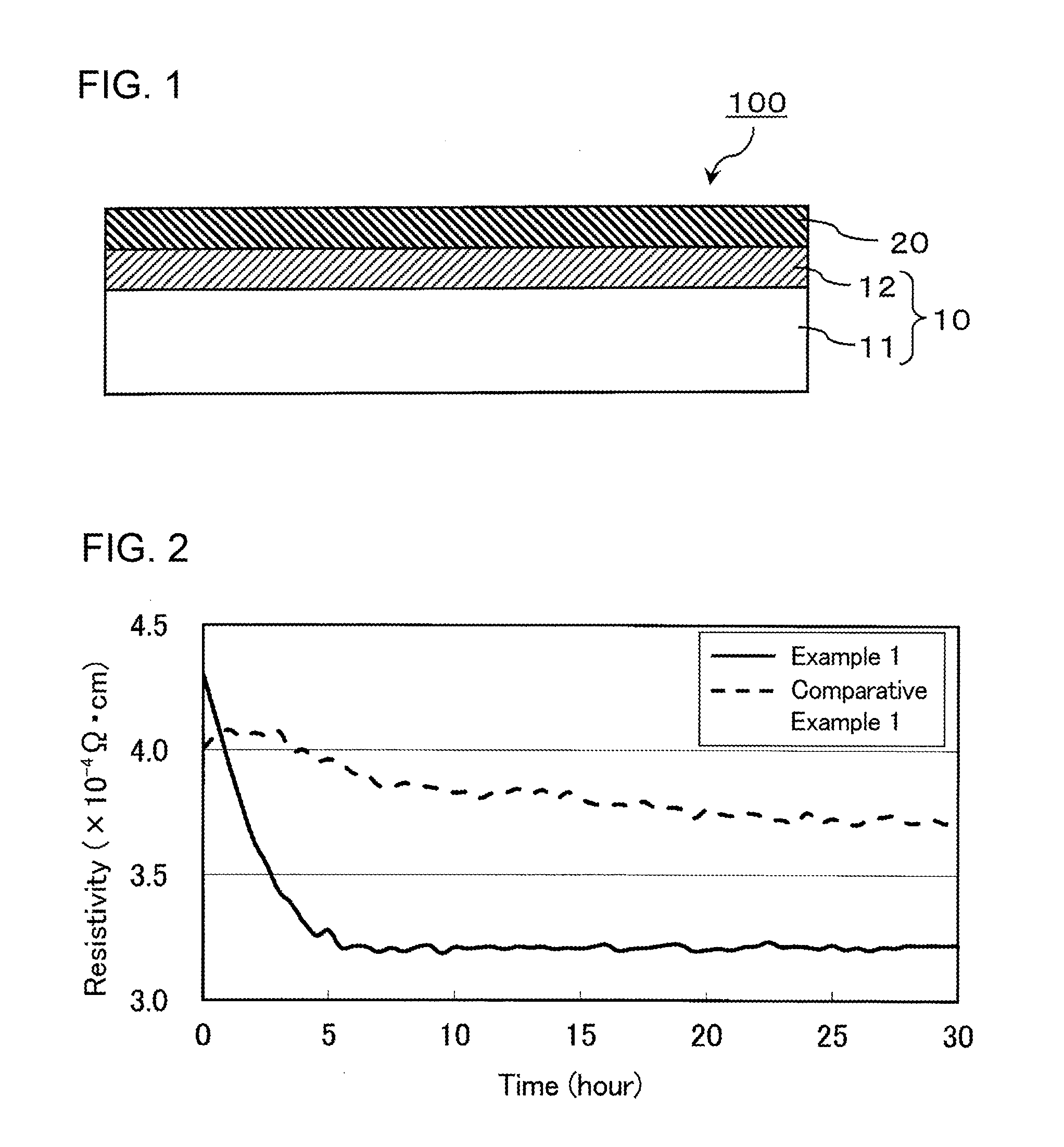Substrate with transparent electrode and method for manufacturing same
a technology of transparent electrodes and substrates, which is applied in the direction of sustainable manufacturing/processing, instruments, and final product manufacturing, etc., can solve the problems of affecting the design of devices, the temperature of deposition cannot be increased in view of the heat resistance of the base material, and the film base material may undergo a dimensional change, etc., to achieve excellent productivity, improve the response speed of the capacitance touch panel, and simplify the step
- Summary
- Abstract
- Description
- Claims
- Application Information
AI Technical Summary
Benefits of technology
Problems solved by technology
Method used
Image
Examples
example 1
Preparation of Transparent Film Base Material
[0084]As a transparent film, a 188 μm-thick, biaxially stretched PET film provided with a hard coat layer made of a urethane-based resin formed on both surfaces thereof (heat shrinkage start temperature: 85° C.; heat shrinkage percentage during heating at 150° C. for 30 minutes: 0.6%) was used. A 40 nm-thick transparent dielectric material electrode layer made of silicon oxide (SiO2) was formed on one of the surfaces of the PET film by the sputtering method.
[0085](Deposition of Amorphous Transparent Electrode Layer)
[0086]Using indium tin oxide (content of tin oxide: 5% by weight) as a target, sputtering was performed under conditions of an oxygen partial pressure of 5×10−3 Pa, a deposition chamber internal pressure of 0.5 Pa, a substrate temperature of 0° C., and a power density of 4 W / cm2 while a mixed gas of oxygen and argon was introduced into the chamber. The thickness of the obtained ITO layer was 25 nm.
[0087]The substrate with a tra...
PUM
| Property | Measurement | Unit |
|---|---|---|
| Temperature | aaaaa | aaaaa |
| Temperature | aaaaa | aaaaa |
| Temperature | aaaaa | aaaaa |
Abstract
Description
Claims
Application Information
 Login to View More
Login to View More - R&D
- Intellectual Property
- Life Sciences
- Materials
- Tech Scout
- Unparalleled Data Quality
- Higher Quality Content
- 60% Fewer Hallucinations
Browse by: Latest US Patents, China's latest patents, Technical Efficacy Thesaurus, Application Domain, Technology Topic, Popular Technical Reports.
© 2025 PatSnap. All rights reserved.Legal|Privacy policy|Modern Slavery Act Transparency Statement|Sitemap|About US| Contact US: help@patsnap.com


